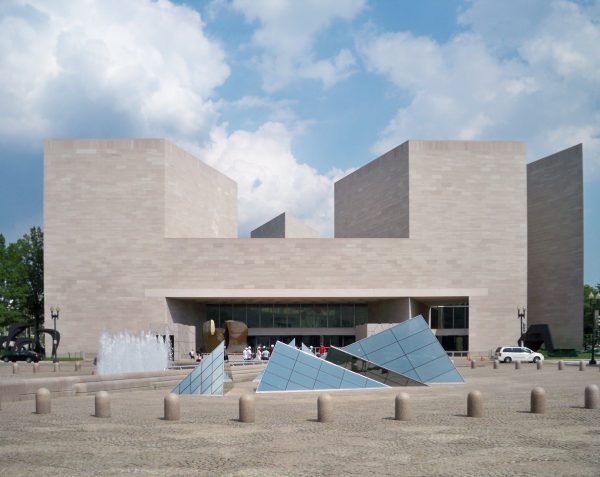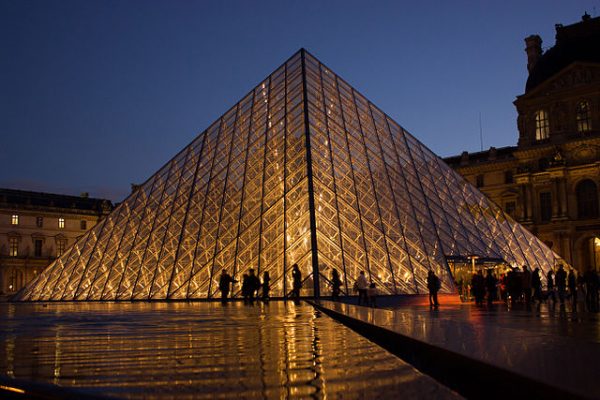Remembering I.M. Pei
When I heard that the internationally acclaimed modernist architect, I.M. Pei, died on May 16 at the age of 102, I lamented his passing and paused to reflect on where and when this immensely talented patrician Chinese-born American architect and I had crossed paths. Known affectionately by colleagues and friends as “I.M.,” he created monumental structures on three continents.
In 1957, I was director of the Cincinnati Contemporary Arts Center. Downtown Cincinnati was undergoing a metamorphosis. Pei had recently emerged as a major architectural talent. I hoped that it might be possible to involve him in Cincinnati’s future and invited him to come there and speak about his philosophy of urban design.
At that point in his career, he was the in-house architect for developer William Zeckendorf’s Webb and Knapp real estate firm. Following Pei’s Cincinnati visit, I went to see him at his 343-345 Madison Avenue office in New York, a thirteen story Italianate palazzo style edifice. His office was a glass enclosed rectangle situated on the roof of the building. Yes, he was working for a commercial real estate tycoon, but he established his own personal design identity within the confines of that situation.

Our paths did not cross directly for some time. In the interim, I followed his career evolve and often experienced immersion in one of his museums. While on the staff of the New York State Council on the Arts, I got to know his brutalist concrete Everson Museum in Syracuse, a predecessor to his transformative design of the National Gallery of Art in Washington.
In 1979, as a member of the first America cultural delegation to visit China after normalization of relations, we went to Suchow, a city noted for its historic contemplative gardens. Among them was the Pei family garden, one of the most beautiful and extensive. While in this garden, I remember saying to myself, “If this is I.M. Pei’s family heritage, no wonder he is a great architect.”
On assignment for Connoisseur magazine to do an article on the National Gallery in Washington, I had lunch in the executive dining room. I.M. and his wife were sitting at the next banquette on our side of the room. I thought, “How wonderful that he and his wife could have lunch in one of his museums.” I was tempted to introduce myself and decided against it.

Having been in Paris frequently in the late 1980s, I followed the construction of Pei’s glass pyramid at the Louvre. It replaced the former museum entrance’s colossal 12 foot wooden doors displaying a hand written sign in English, “Beware of pickpockets.” I would often take the number 21 bus from Place St. Michel to Place de la and Concorde and see the pyramid slowly rising. When completed, I was a member of a tour group led by the Pei office’s construction expediter. With its grand escalator reaching into the bowels of this former palace, I marveled at how he had animated this underground space converting it into a cultural shopping mall. On that occasion, I was one of very few people in the space and could appreciate the clarity of the design. When I later returned and the pyramid/entrance was open to the public, I could further appreciate the success of Pei’s design in managing large groups of people.
Twelve years ago, when I was working on a Chinese American project, we had lunch in New York at a small French restaurant on 18th Street between Fifth and Madison. Good food. Pleasant ambiance. Courteous service. His favorite. At the age of 90, he arrived by taxi, unaccompanied, and left similarly.
In retrospect, I would say that I.M.Pei manifested a kind of personal majesty that I seldom saw in others. I consider myself fortunate to have encountered him on several occasions.
